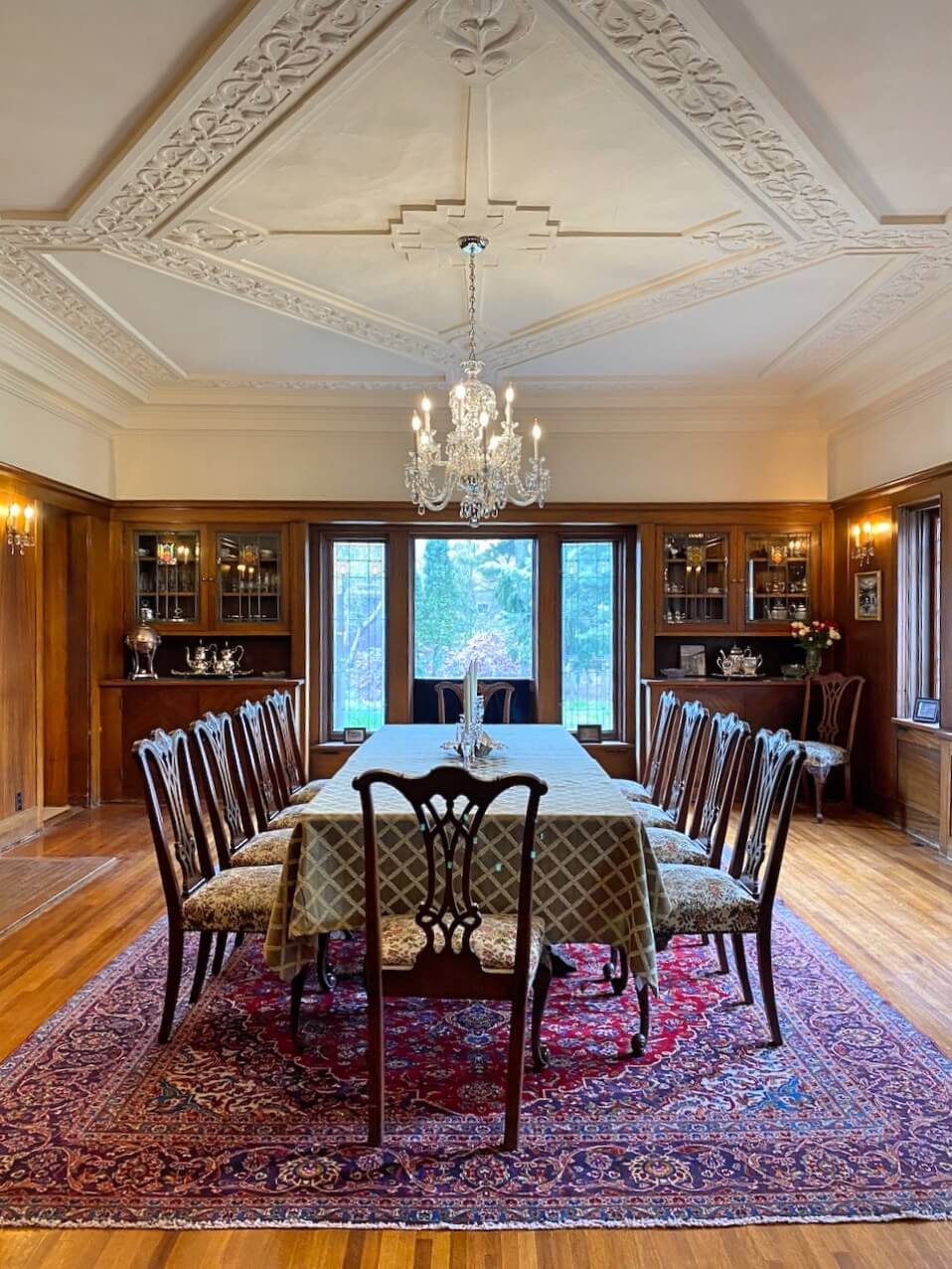Hauberg Estate in Rock Island, Illinois, provides a link to a 19th-century lumber empire and to Jens Jensen, one of the pioneers of landscape architecture in the United States.
Susanne Denkmann, an heiress of the Weyerhaeuser-Denkmann Lumber Company, built Hauberg Estate in the early 1910s. The 10-acre estate consists of a 20,000-square-foot mansion and a 8,000-square-foot carriage house.

Credit: Visit Quad Cities
Weyerhaeuser-Denkmann was the largest lumber mill in the United States in the mid- to late 1800s.
Deb Kuntzi, the estate’s executive director, said the Chicago-based architectural firm Spencer & Powers designed the home. George Niedecken was the interior architect, and Jensen served as landscape architect.
Jensen, known as the father of Prairie-style landscape design, used indigenous plants in natural settings.
Denkmann worked with Jensen to develop the grounds on her estate.
“Hauberg Estate’s mansion is called the Tulip Mansion and is of the Prairie-style design,” Kuntzi said. “Tulips are found throughout the mansion in ceilings, fireplaces, mosaic glass tile, fumed glass, stenciled on canvas and in wood and plaster. The Jens Jensen landscape design is one of 35 left in the United States, and we have one in its entirety.”

Credit: Hauberg Estate
According to the Hauberg Estate website, the estate is a perfect example of Jensen’s philosophy of landscape architecture. “The landscape combines the elements of sky, sun, clouds, wind, water, native flowers, shrubs, trees and organic structures to create a living landscape that is beautiful, understandable and on-going,” the site says.
Kuntzi said the estate can do a Jens Jensen presentation for groups, show The Living Green documentary film and then conduct a tour of the estate. Special rates are available for groups.
Some visitors are very interested in the estate’s architecture, Kuntzi said, while others focus on the landscape design.

Credit: Hauberg Estate
“Our main goal for Hauberg visitors is to learn the history and the importance that the Haubergs made in Rock Island,” Kuntzi said. “They built the YMCA, YWCA, Blackhawk Historic Site, West End Settlement, Blackhawk Hiking Club, Denkmann Memorial Library in Augustana College, and John Hauberg was a pro bono attorney for Native Americans.”
Susanne Denkmann was the builder of the estate. She began the process in 1908, and the home was finished in 1911. John Hauberg and Susanne Denkmann were married on June 29, 1911, and they moved into the mansion after their honeymoon. Hauberg was an attorney at that time, but soon gave up his practice so more time could be spent with Susanne and their philanthropy.
Landscape restoration
Jensen’s landscape design included five ponds on the Hauberg Estate. The most recent restoration, completed earlier this year, was of the lower pond, which is the biggest, and included restoration of the dam and waterfall. Work included removing silt and planting flowers. The estate has Jensen’s complete plans that detail the kind of plants and where they were planted, and it is restoring the landscape back to its original design. Hauberg Estate hopes to have three ponds restored by the end of this summer. Restoration of the upper two ponds, which also have the spring head, should be completed by the summer of 2022.

Credit: Hauberg Estate
“We are working on the 3-acre terraced garden and turning it into a Children’s Art Garden,” Kuntzi said. “The terraced garden has five terraces. We look to have this completed by 2025.”
In 1905 Jensen, a native of Denmark, was general superintendent of the West Park System in Chicago. His design work for the city can be seen at Garfield Park, Humboldt Park, Douglas Park, Pulaski Park and Columbus Park. He also established the Forest Preserve District of Cook County, and he played a role in building support for the Indiana Dunes.
Jensen retired from the park system in 1920 and started his own landscape architect practice. He designed the landscaping for 350 estates, including the homes of Edsel and Eleanor Ford, Clara and Henry Ford, the Armour and Florsheim families, and many other influential people of that era.











